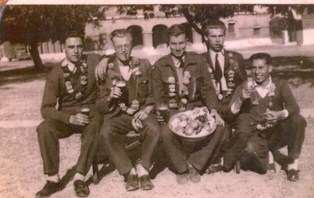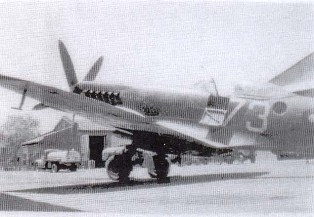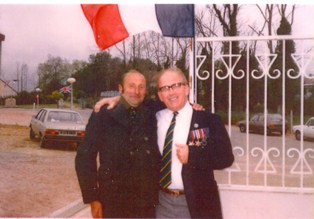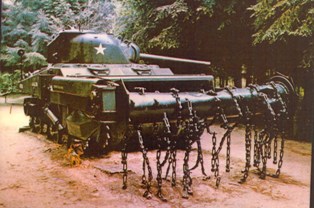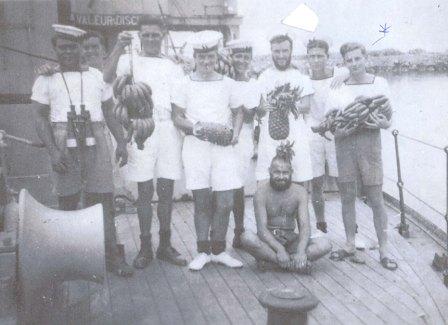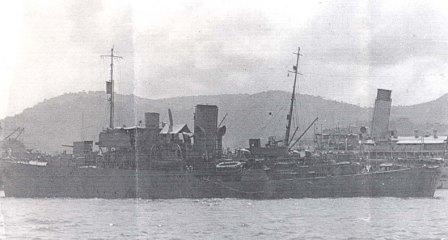
Private 12992 Edwin Walter Cox
2nd Bedfordshire Regiment
Died of Wounds 16th May 1915
Son of Mr. and Mrs. Albert Cox, of Apsley, Hemel Hempstead, Herts.
Chocques Military Cemetery, I. C. 5.
Born: Hackney, Middx.
Enlisted: Hertford.
Residence: Apsley End.
Edwin Walter Cox was born in Hackney, before moving to Apsley, the son of Mr and Mrs Albert Cox. He served in the 2nd battalion the Bedfordshires and died aged 20 on the 16/5/15, the day before Nimrod Oakins, most likely in the opening stages of the battle of Festubert.
This is usually unclear. Cox is listed as DOW (Died of Wounds), with no further information given. This means the casualty in question could have died the same day they were wounded, in a casualty clearing station a kilometre behind the line, or weeks later in a main hospital further back from the fighting. Furthermore it is unclear when Cox or any casualty listed as DOW received their wound. Therefore the incident could have occurred at any point in the preceding days or weeks, although we can know with certainty thanks to the article found in the Gazette.
The 2nd Bedfordshires saw little action from 8th to 11th May, but it is on the evening of the 11th that things start to become more interesting, and A, B and D companies move up to their section of trench, relieving part of the London brigade. C remained at the ‘Indian village’. There is no further information available on this nugget, but I would assume this is a encampment of Indian or Asian commonwealth troops or even worker - a living example of the way the entire Commonwealth pulled together to help the motherland win its war, although one would imagine not always willingly. The situation of these men, brought half way across the world to fight for a country many had never seen, is an interesting one, although that is a tale for another day.
It should be noted that on the 9th the diary lists someone being wounded by shell fire, suggesting the 2nd Bedfordshires were under fire for this period, meaning Cox could have been hit on any of these days although it is unlikely. May 12-13 were spent improving trenches, also under fire so again Cox could have been hit here. On the 14th the battalion pulls back from their trenches to allow for the heavy bombardment of the German lines, softening them up for the impending assault. It appears that the attack was supposed to begin on the 15th but was delayed until the 16th, with the bombardment continuing through.
On May 16th the battalion moved up to the German trench captured earlier that day by the 20th and 22nd brigades. Their turn to ‘go over the top’ would come the next day, when Nimrod Oakins, another man whose story can be found on our site, was killed. The battalion spent the rest of the day improving the trenches and running communications back to old the British lines. Heavy, dangerous and at times exposed work. Death could come from anything from a snipers bullet to shrapnel from a shell burst.
This is backed up by an anecdote found in the war diary of the 16th in which a Sergeant Eustace of the 2nd Border Regiment and a Lance Corporal Coleman of the 2nd Bedfordshires “showed great gallantry bringing our wounded to the safety of our trenches under heavy shellfire” apparently bringing in more than 50 wounded and “receiving praise from several officers on the spot”. Our man could have been one of any of these 50 wounded.
However after research on the relevant copies of the Gazette, the local paper, an article detailing the specifics of Cox’s death was found. Private soldiers were rarely commemorated in this fashion so the article is an unexpected surprise!
The article contradicts my previous research in the war diaries, as I suggested that the 16th of May was the most likely death, as indicated above. It tells us with some certainty that Cox in fact died after he sustained head injuries due to enemy action at around 7 pm on the 13th. His wounds were serious and in the words of his comrade Corporal Arthur Joyce “no hopes of recovery were entertained from the first”, he was taken away by stretcher bearers and died soon after, presumably at a casualty clearing station close to where he fell. This is therefore the definitive report on Cox’s death. It shows how speculative one has to be when working with war diaries, who provide limited information of the deaths of officers, let alone enlisted men. The information regarding actions after Cox’s death have been left in, as the information is valid, and arguably just as fascinating.
Hemel Hempstead Gazette, 22nd May 1915, p. 5
Sources:
- 2nd Bedfordshire Regiment War Diary, Catalogue Reference: WO 95/1658
- Hemel Hempstead Gazette, 22nd May 1915, p. 5
By Matt James
May and June 2016
